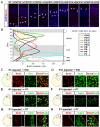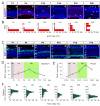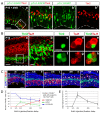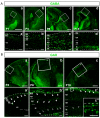Cortico-cerebral histogenesis in the opossum Monodelphis domestica: generation of a hexalaminar neocortex in the absence of a basal proliferative compartment
- PMID: 20302607
- PMCID: PMC2859365
- DOI: 10.1186/1749-8104-5-8
Cortico-cerebral histogenesis in the opossum Monodelphis domestica: generation of a hexalaminar neocortex in the absence of a basal proliferative compartment
Abstract
Background: The metatherian Monodelphis domestica, commonly known as the South-American short-tailed opossum, is an appealing animal model for developmental studies on cortico-cerebral development. Given its phylogenetic position, it can help in tracing evolutionary origins of key traits peculiar to the eutherian central nervous system. The capability of its pup to regenerate damaged cortico-spinal connections makes it an ideal substrate for regenerative studies. Recent sequencing of its genome and the ex utero accessibility of its developing cerebral cortex further enhance its experimental interest. However, at the moment, a comprehensive cellular and molecular characterization of its cortical development is missing.
Results: A systematic analysis of opossum cortico-cerebral development was performed, including: origin of cortical neurons; migration of these neurons from their birthplaces to their final layer destinations; and molecular differentiation of distinct neocortical laminae. We observed that opossum projection neurons and interneurons are generated by pallial and subpallial precursors, respectively, similar to rodents. A six-layered cortex with a eutherian-like molecular profile is laid down, according to the inside-out rule. However, neocortical projection neurons are generated by apical neural precursors and almost no basal progenitors may be found in the neuronogenic neopallial primordium. In the opossum neocortex, Tbr2, the hallmark of eutherian basal progenitors, is transiently expressed by postmitotic progenies of apical precursors prior to the activation of more mature neuronal markers.
Conclusions: The neocortical developmental program predates Eutheria-Methatheria branching. However, in metatherians, unlike eutherians, a basal proliferative compartment is not needed for the formation of a six-layered neuronal blueprint.
Figures








References
Publication types
MeSH terms
Substances
LinkOut - more resources
Full Text Sources
Medical

